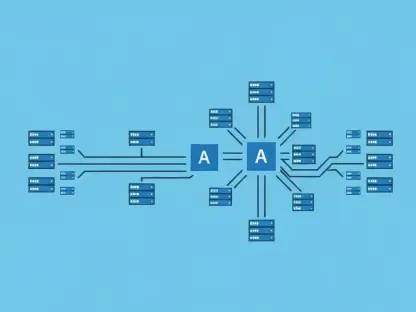In a quiet corner of Wales, the Vale of Glamorgan Council is grappling with a pressing technological crisis that could impact the very backbone of its social care services, and with the current digital care record system, known as CareDirector or the Welsh Customer Care Information System (WCCIS), set to become obsolete and unsupported by January 26, 2026, the council faces a tight deadline to transition to a modern platform. This urgency is not just about keeping up with technology but ensuring that sensitive care data remains secure and accessible for those who depend on it most. The stakes are high, as any delay could disrupt critical services and compromise data integrity. This situation underscores a broader challenge faced by many local authorities: balancing the need for digital transformation with limited time and resources. As the clock ticks, the council’s efforts to navigate this complex transition reveal both the hurdles and the collaborative spirit driving the project forward.
Urgent Timeline Drives Critical Transition
The Vale of Glamorgan Council finds itself in a race against time to replace the aging WCCIS with a new digital record-keeping system before the looming end-of-life date. In a significant step forward, the council, alongside Merthyr, Rhondda Cynon Taf, and Bridgend councils, completed the procurement process in late 2024, selecting The Access Group’s Mosaic system as the successor. This decision is part of a larger, nationally coordinated effort involving 18 councils and six regional health boards across Wales, all working toward a unified transition. The urgency of this timeline cannot be overstated, as failure to implement the new system on schedule could lead to significant gaps in service delivery. Beyond mere functionality, the transition is crucial for maintaining compliance with data protection standards, ensuring that vulnerable individuals’ information remains safeguarded. The scale of this collaborative initiative highlights the shared recognition of the problem’s gravity, pushing stakeholders to prioritize swift and effective action.
Beyond the selection of a new system, the complexity of moving vast amounts of sensitive data poses a formidable challenge for the Vale of Glamorgan Council. Data migration is not a simple task; it involves extracting information from the outdated WCCIS, ensuring its accuracy, and integrating it into the Mosaic platform without loss or corruption. At a recent meeting of the Live Well Scrutiny Committee, concerns were raised about the readiness of contingency plans should delays occur. Committee members pressed for clarity on timelines, emphasizing that any hiccups could have far-reaching consequences for social care operations. The director of social services acknowledged that while exact schedules remain fluid, risks are being managed through a joint approach with other local authorities. This collective strategy aims to pool expertise and resources, mitigating the potential for isolated failures. Yet, the uncertainty surrounding detailed plans for data extraction and migration continues to fuel apprehension among stakeholders about meeting the critical deadline.
Financial Uncertainties Loom Large
As the Vale of Glamorgan Council pushes forward with replacing its care record system, financial considerations add another layer of complexity to an already challenging endeavor. The Welsh Government has allocated £2.67 million from the Digital Priorities Investment Fund (DPIF) to support both the maintenance of the current system and the transition to the new one. However, a significant concern arises as this funding is not guaranteed for the upcoming fiscal year, leaving potential gaps in resources for regional staffing and other essential costs. Past experiences with IT projects amplify these worries, as the council previously faced unexpected cost overruns during the implementation of financial software, where initial budgets were exceeded by millions due to unforeseen obstacles. Such history casts a shadow of doubt over the current project’s financial projections, prompting scrutiny over whether similar miscalculations could emerge as the transition unfolds.
Adding to the financial strain, councillors have voiced unease about the risk of escalating expenses during this critical system upgrade. During discussions at the scrutiny committee, some members described the proposal as laden with fiscal hazards, pointing to the lack of long-term funding assurances as a primary concern. The collaborative framework with other Welsh councils offers some reassurance, as shared costs and expertise can help buffer individual financial burdens. Nevertheless, the absence of a clear funding strategy beyond the immediate term raises questions about sustainability. If additional resources are needed to address unforeseen challenges during implementation, the council may find itself scrambling for solutions. This uncertainty underscores the delicate balance between investing in necessary digital infrastructure and managing public funds responsibly, a tension that will likely shape decision-making as the deadline approaches and the full scope of expenses becomes clearer.
Collaborative Efforts and Cautious Optimism
The strength of the Vale of Glamorgan Council’s approach lies in its partnership with other local authorities and health boards across Wales, fostering a collective resolve to tackle the impending obsolescence of the WCCIS. This collaborative model not only distributes the workload but also allows for shared learning, as each entity brings unique insights to the table. By working together, these organizations aim to streamline the rollout of the Mosaic system, ensuring that best practices are adopted uniformly. The joint effort is seen as a critical mechanism for managing risks, particularly in areas like data security and system integration, where errors could have widespread repercussions. While challenges persist, this unified front provides a foundation of cautious optimism, suggesting that coordinated action may help overcome logistical hurdles. The emphasis on teamwork reflects a broader understanding that no single council can navigate this transition in isolation, highlighting the value of solidarity in addressing systemic issues.
Despite the collaborative framework, lingering doubts about readiness and execution remain a focal point for the Vale of Glamorgan Council and its partners. Scrutiny committee members have expressed a spectrum of views, with some questioning whether mitigation strategies are robust enough to handle potential setbacks. While council officers project confidence in the joint approach, they acknowledge that certain elements, such as finalized timelines for data migration, are still in flux. This uncertainty fuels a cautious outlook among stakeholders, who recognize the necessity of the upgrade but remain vigilant about the pitfalls of complex IT projects. The consensus on the importance of replacing the outdated system is clear, yet the diversity of perspectives on how to achieve a seamless transition underscores the nuanced nature of the challenge. As the deadline nears, maintaining open dialogue and refining contingency plans will be essential to bridging gaps in preparation and ensuring that the shift to a new platform upholds the integrity of social care services.
Path Forward After Intense Preparations
Reflecting on the journey, the Vale of Glamorgan Council tackled a daunting challenge with a blend of urgency and strategic collaboration to replace an outdated care system before it became unsupported. The procurement of the Mosaic platform marked a pivotal achievement, setting the stage for a modernized approach to managing critical data. Financial uncertainties and historical IT project setbacks had cast doubts, but the council, alongside regional partners, navigated these hurdles through shared resources and expertise. Intense discussions in scrutiny committees had highlighted risks, yet also spurred actionable oversight. Looking ahead, the focus must shift to rigorous testing of the new system and securing sustainable funding to cover any lingering gaps. Continuous coordination with other councils and health boards will be vital to refine data migration processes and address unforeseen issues. This collective resolve offers a blueprint for future digital transformations, emphasizing adaptability and partnership as key drivers of success in safeguarding essential services.









